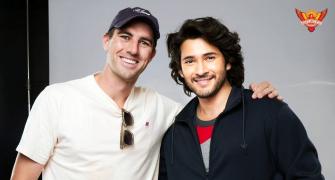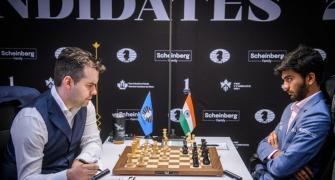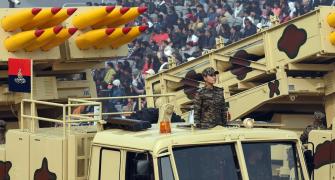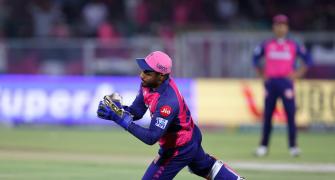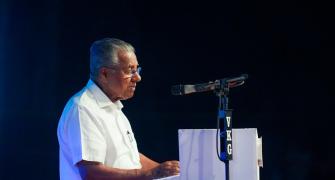The secretary general of London's Buddhist Society is canvassing ideas to build a modern stupa in the British capital to house a collection of jewels that may have rested next to the mortal remains of Gautam Buddha.
Paul Seto is secretary general of one of the oldest Buddhist societies in Europe and he discovered the small but priceless collection of jewels in a corner of the society's offices, close to Victoria station.
The provenance of the collection has yet to be clearly established, but the box containing beads made of sapphire, cornelian, amethyst, ruby and rock crystal appears to be part of a larger collection of relics from a stupa at Birdpur in Uttar Pradesh, close to Buddha's birthplace at Lumbini in southwest Nepal.
Barely able to contain his excitement, Seto told rediff.com that his preliminary plan is to exhibit the collection of 12 jewels in a glass cabinet at the society's offices, pending a decision to house them in a more elaborate structure like a modern-day stupa that will attract pilgrims from all over the world.
"We have had many inquiries already about this collection," explains Seto, "and once word get around we expect a lot more interest will be generated."
How Seto discovered the jewels is like something out of a modern day Sherlock Holmes mystery. Last year he was rooting through the contents of a display cabinet in the society's offices, assisted by Philip Trent, an English antiques dealer.
At the back of the cabinet the two men noticed a shabby cardboard box containing medals and conference badges that apparently had belonged to a deceased British judge, Christian Humphreys, who founded the society in 1924.
Within the box was a smaller cardboard box inscribed with the words, 'Relics of Buddha, From the Piprawah Stupa, Birdpore Estate, Gourkhpur, NWP, India, 1898.'
Inside the smaller box were 12 small compartments containing the bead-like jewels.
Amateur detective work by Seto led him to an article written by one William Claxton Peppe in 1898, 'The Piprahwa Stupa, containing relics of Buddha', published in the Journal of the Royal Asiatic Society.
It turned out that Peppe had been the manager of an indigo estate in UP. When archaeologists at the turn of the 19th century announced they had found a stone pillar at Lumbini, a few miles away from Birdpur, Peppe decided to excavate a prominent mound on his own estate.
His subsequent excavations resulted in the discovery of a stone box that contained a small sopastone box, a crystal bowl and three vases containing pieces of bone and hundreds of small ornaments made of gold, pearls and precious stones.
One vase had an inscription in Pali, which read, 'This shrine for relics of the Buddha, the August One, is that of the Sakyas, the brethren of the Distinguished One, in association with their sisters and with their children and their wives.'
Further research by Seto led him last year to Peppe's grandson in southern England, a retired television cabinetmaker, who told him how most of his grandfather's find had been donated to the Kolkata museum. From there it was then redistributed to Rama V, the then king of Thailand, revered by his subjects as 'the upholder of Buddhism in the Buddhist world'.
But William Claxton Peppe also kept some of the treasures for himself and this collection of pearls, jewelled flowers and gold coin impressions complementing Seto's find is in the hands of grandson Neil, who says he also has possession of what seems to be a tooth and some petrified rice from Piprahwa.
What the two men intend to do with these two separate but connected treasure caches of Buddhist relics has yet to be decided. But the discoveries have created a slow burn of excitement right across the Buddhist world. Pilgrims in their hundreds of thousands are likely to be interested to have a look at the jewels that may have been scattered next to Buddha's bones.
Robert Knox, keeper of the department of Oriental Antiquities at the British Museum in London, has written to Seto, saying, "These are unique pieces. They have considerable relevance and are very important association pieces for Buddhists, who have a special respect for stupa deposits, just as a Catholic would have respect for the relics of saints."

